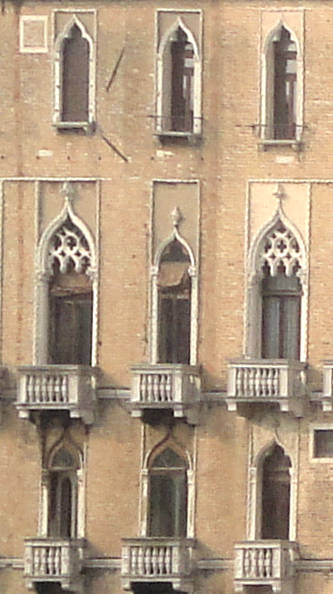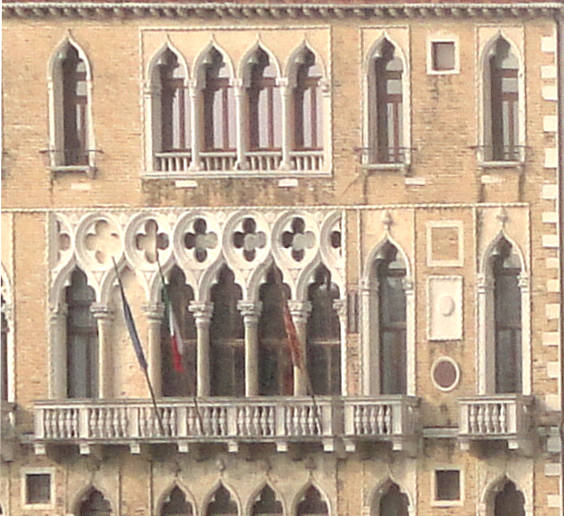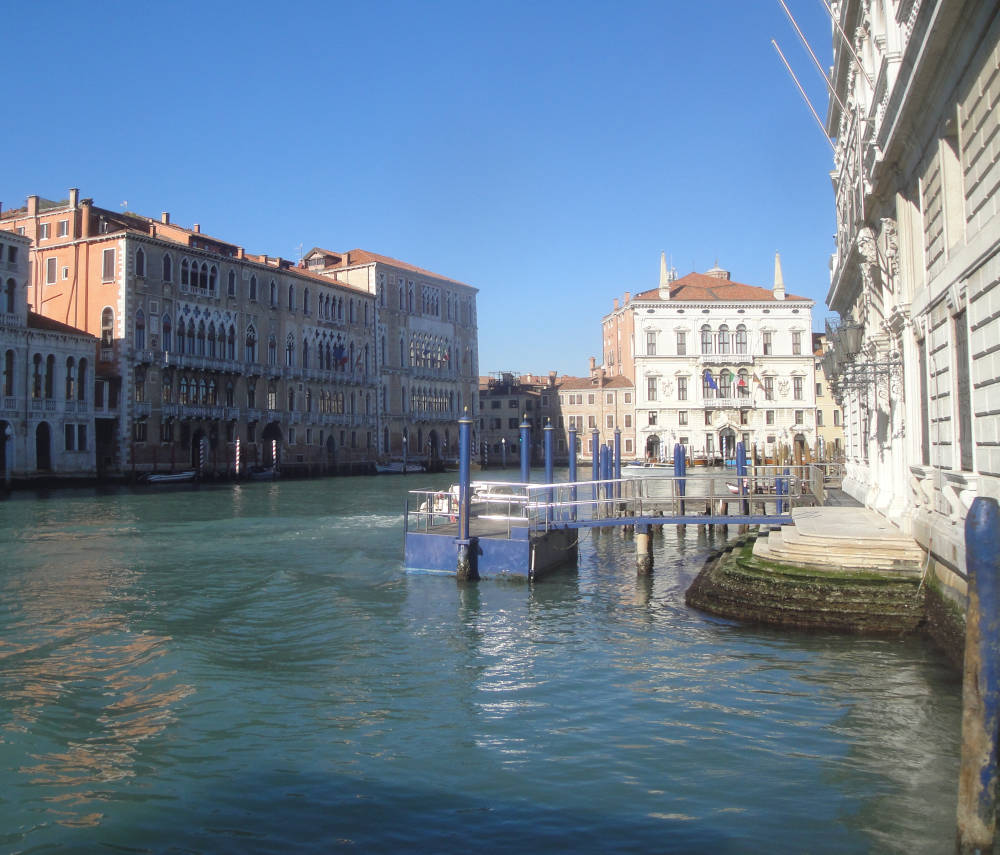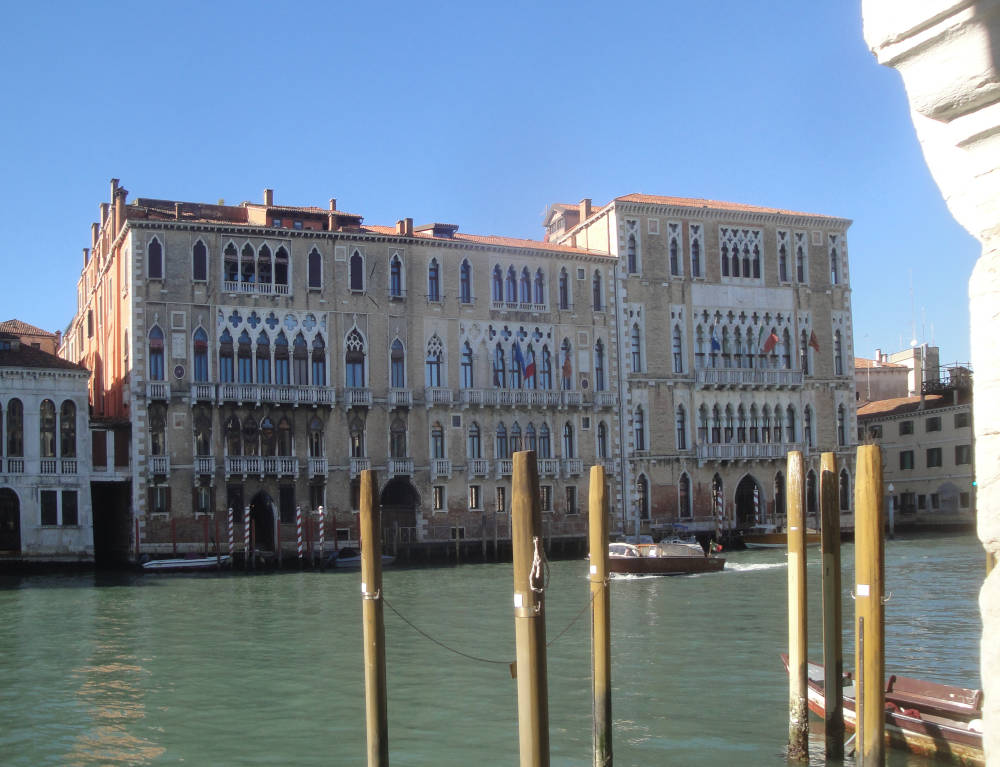Click on images to enlarge them.

Although Ruskin devotes significant discussions of the Palazzo Ca Foscari, the neighbor of the Giustiani palace, he barely mentions the Giustiani. The first volume of The Stones of Venice mentions one of its mouldings in a list of 28 examples from France and Italy (9.338).


While writing The Seven Lamps of Architecture (1848), Ruskin argued that Ca Foscari represented the best of fifteenth-century gothic precisely because it embodied a particular kind of architectural refinement that involved casting off luxuriant decoration for pure form — a kind of architecture, in fact, that seems opposed to the elaborate embellishments called for by the famous chapter “The Nature of Gothic’ in The Stones of Venice. In “The Lamp of Beauty,” for example, he points to one of the window mouldings on the Ca Foscari, which “is, for so simple a group, the grandest in effect I have ever seen” (1.166). The windows, columns, and wall decoration of the Giustiani seem very similar. Was it in even worse shape than the Ca Foscari during the years Ruskin worked in Venice, and that’s why he doesn't mention it?

The Palazzo Giustiani with Ca Foscari at the right.


Left: Looking past the Palazzo Giustiani, which is closest to the viewer, to Ca Foscari and the bend in the Grand Canal. Right: A Closer view of Palazzo Giustiani and Ca Foscari from across the canal.
More of Ruskin's Venice
- St. Mark’s Cathedral
- The Palazzo Ducale, Venice
- The Scuola de San Rocco
- On the Grand Canal
- Leaving the Grand Canal
- On the way to Venice from the mainland
- Venice: Details and Corners
Photographs 2020. [You may use these images without prior permission for any scholarly or educational purpose as long as you (1) credit the photographer and (2) link your document to this URL in a web document or cite the Victorian Web in a print one.]
Bibliography
Ruskin, John. The Works. Ed. E. T. Cook and Alexander Wedderburn. “The Library Edition.” 39 vols. London: George Allen, 1903-1912.
� �
Last Modified 30 March 2020